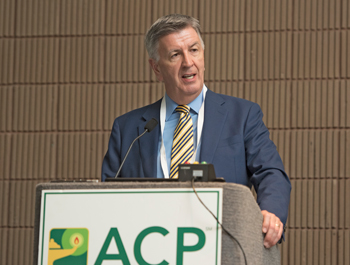Study other arts to practice better medicine
Patient communication skills hinge upon careful listening and speaking, cultural literacy, humility, and awareness of the patient's health literacy and numeracy.
I have often thought about doing a study where the patient and physician are queried separately about their takeaways after a clinical encounter. They would jot down their thoughts right after the appointment, in those moments where the experience would be fresh in their minds. How often would the takeaways be the same for each? And if not the same, would that mean we had failed in our communication? The clinician may express concern about elevated glucose levels and continue in near soliloquy about lack of adherence to blood pressure medications and the patient's weight gain. The patient may nod politely while thinking that the recommendations require a lot of change and attention that just will not be feasible, but will not share much, not wanting to let the doctor down.
As humans, we communicate in so many ways. We know from the science of communication that words are but a small contributor. How we speak, what our eyes and body say, resonate most with the patient, the family, and the learner observing us.
Similarly, we hear the patient with more than words. We take note of the posture, the intonations, the sighs and murmurs, even the silence before we ask a word of history or begin the physical exam. Maybe we begin our interpretive process when we happen to see the patient in the waiting room. We also become closely attuned to dissonance, to a lack of harmony between words and expression that our experience has taught us is a clue to take more notice and to delve more deeply.
We get to know our patients in context. We interpret patients' signs and symptoms guided by our experience. It is a hermeneutic process where the clinician puts together the multiple elements of history and physical examination to come up with an interpretation of the patient narrative. Not unlike scholars who interpret texts, as clinicians, we interpret people, not just the body, not just the illness, but the person and the person's individual manifestation of her or his health and illness, which may be shaped by culture, class, and other psychosocial parameters that contribute to the patient's context. Defining the context requires keen observation and awareness of community because as humans we live in communities, and our communities impact our health.
Much has been written on patient-centered care and shared decision making. There are approaches to guide us to develop our communication skills or our cultural literacy further. There is much that we have and will learn through our experience, and there are approaches that may fast-track our experience.
When I was a child, I set out to read every biography in our elementary school library with the intuition that each life is a wealth of knowledge. How intimate it was to learn from another's life. Consider reading a book such as a biography or a novel. It might be a favorite read. It might be a new read. Allow yourself to drift away, meet and get to know the characters, and critically consider your interpretation, your perspective, on the text.
Consider becoming a fan of improvisational theater. Ours is an improvisational art. We enter the exam room often not knowing what to expect while knowing that our skill lies in “reading” the patient accurately. We meet, engage, assess, repeat. In many ways, the life cycle of a clinical encounter relies on the same skills that are needed in improv: observation, interpretation, and communication. Observing masters of this trade may help us with ours.
The wonderful thing about communication is that it is a two-way street. I encourage my students to check in with patients and ask, “How was the clinical experience for you? How could I do better? Was my assessment on track?” This acknowledgment that the patient is ultimately “the expert” on herself or himself is humbling and liberating. We do not work in a vacuum. We can check in with our patients to be sure we heard correctly and we understood. Through careful listening and careful speaking, guided by cultural literacy, cultural humility, and awareness of the patient's health literacy and numeracy, we can also check in to see if our recommendation, our message, landed. In that same spirit of open and inclusive communication, we can work toward a plan that fits.
Skillful inclusive clinical communication is essential to our profession and foundational to the patient-physician relationship. It facilitates healing. It is, for each of us, a work in progress, in evolution, that is based on trust and gives us an opportunity to learn more about ourselves.
Ours is a profession where we are ever learners.



